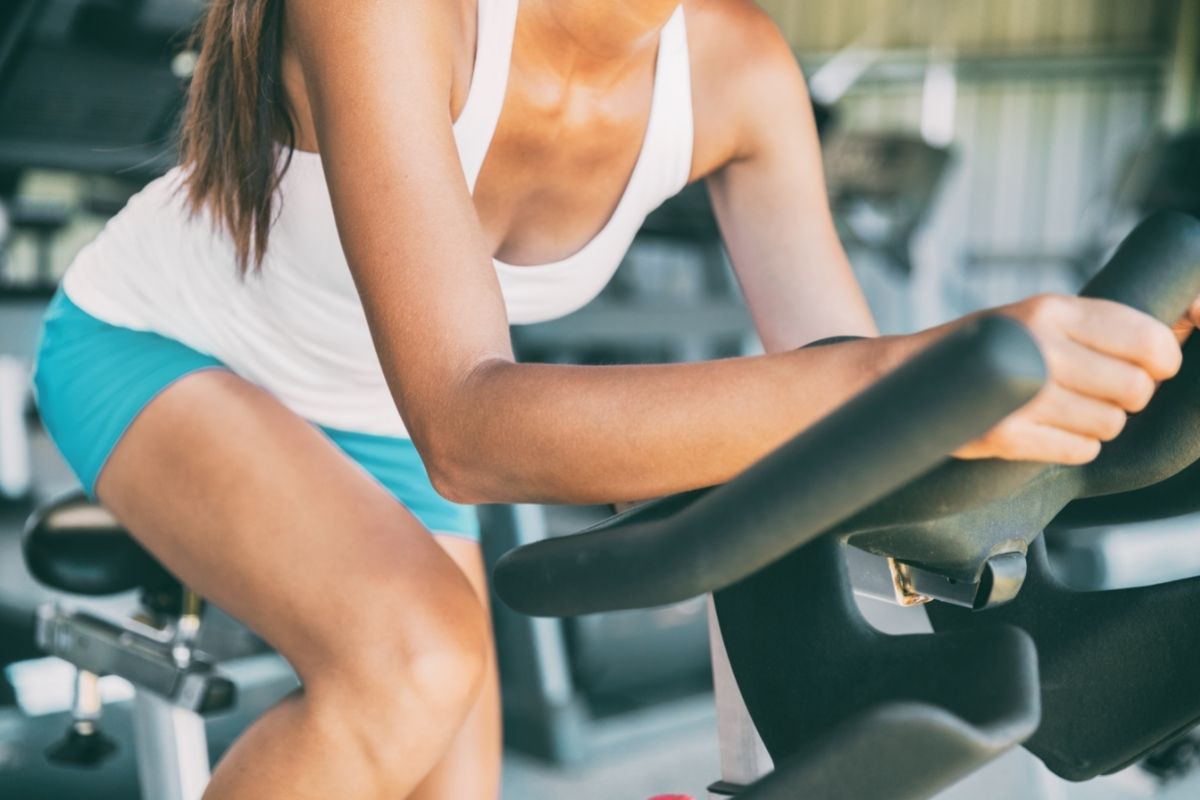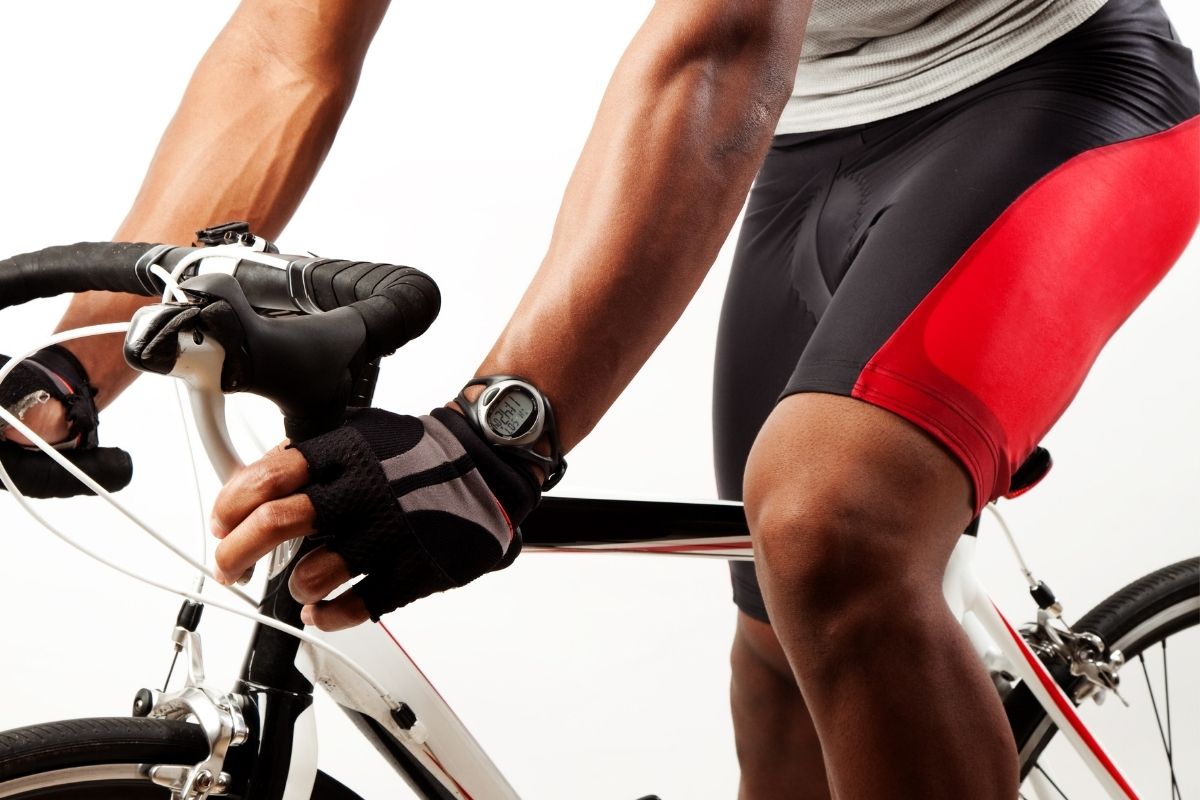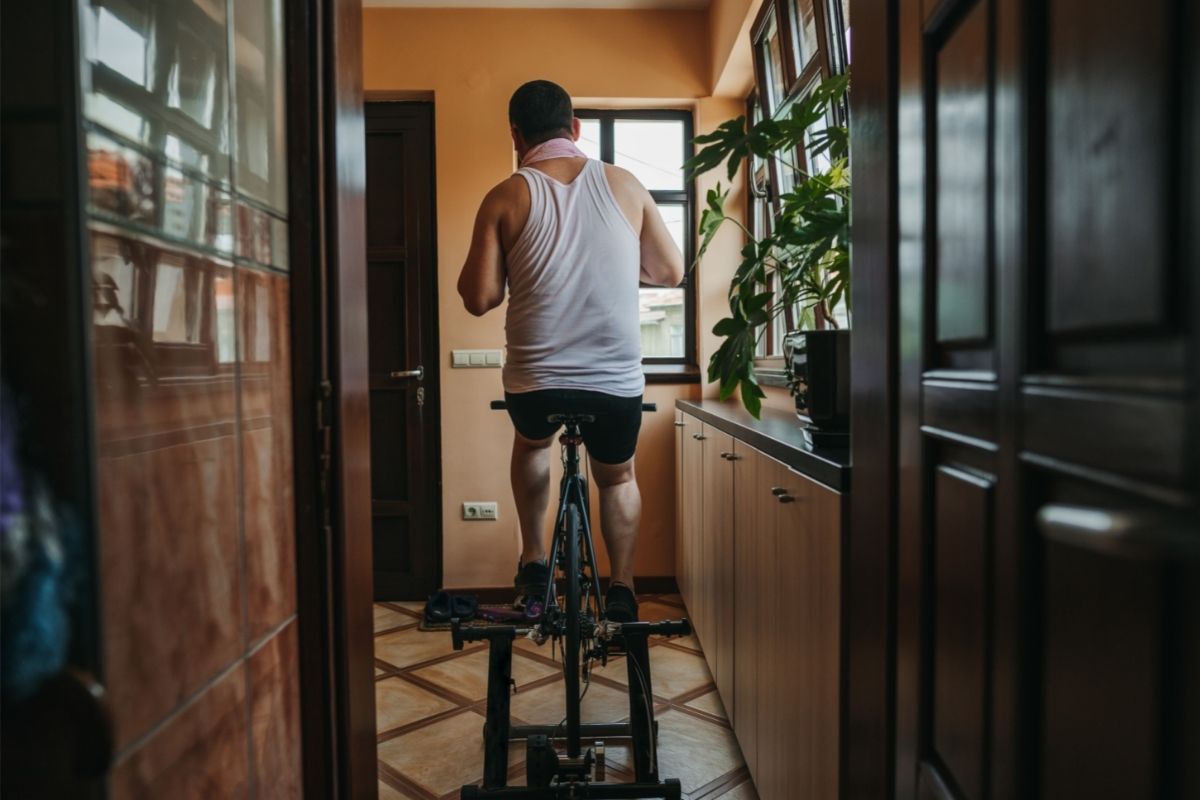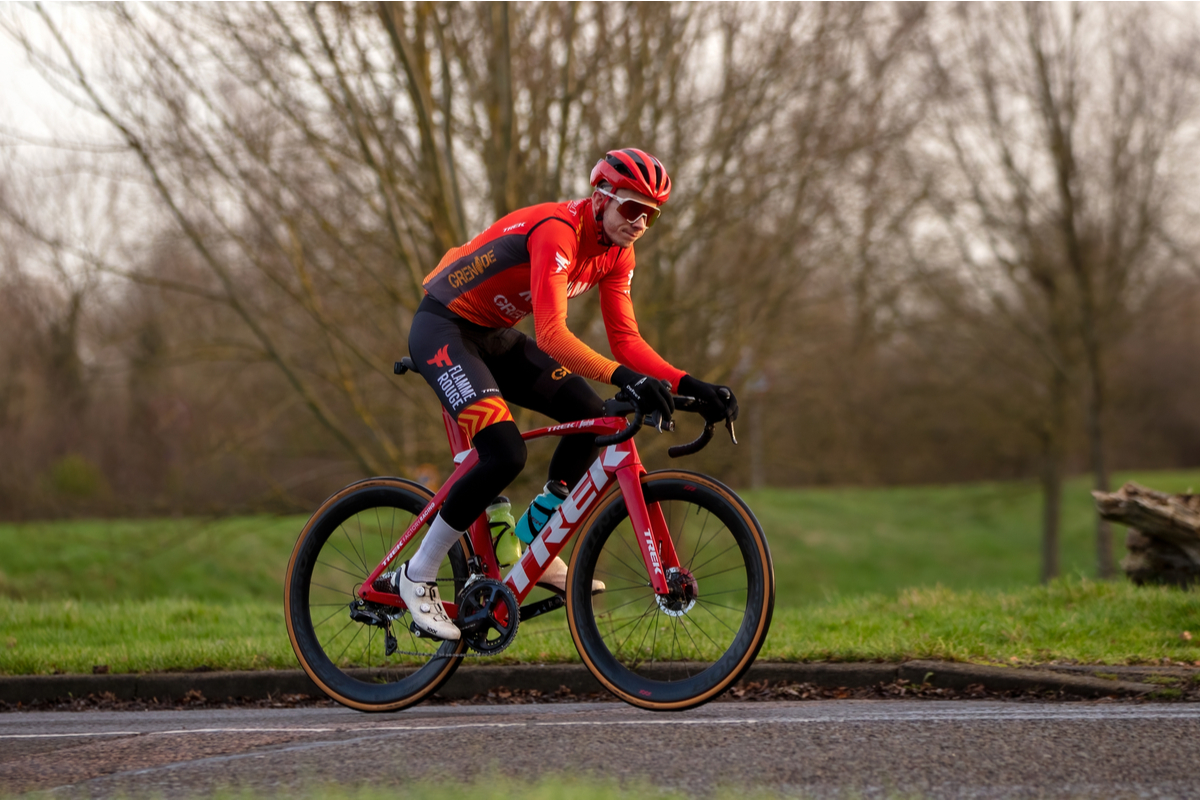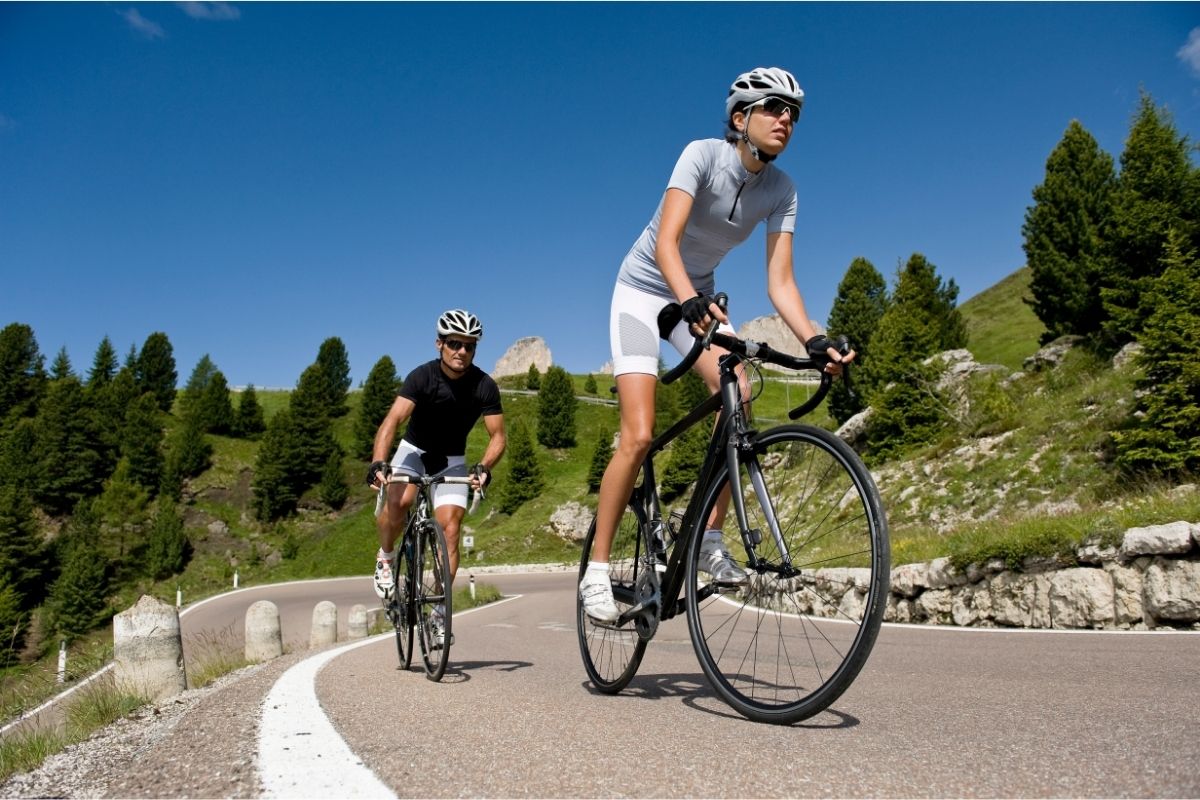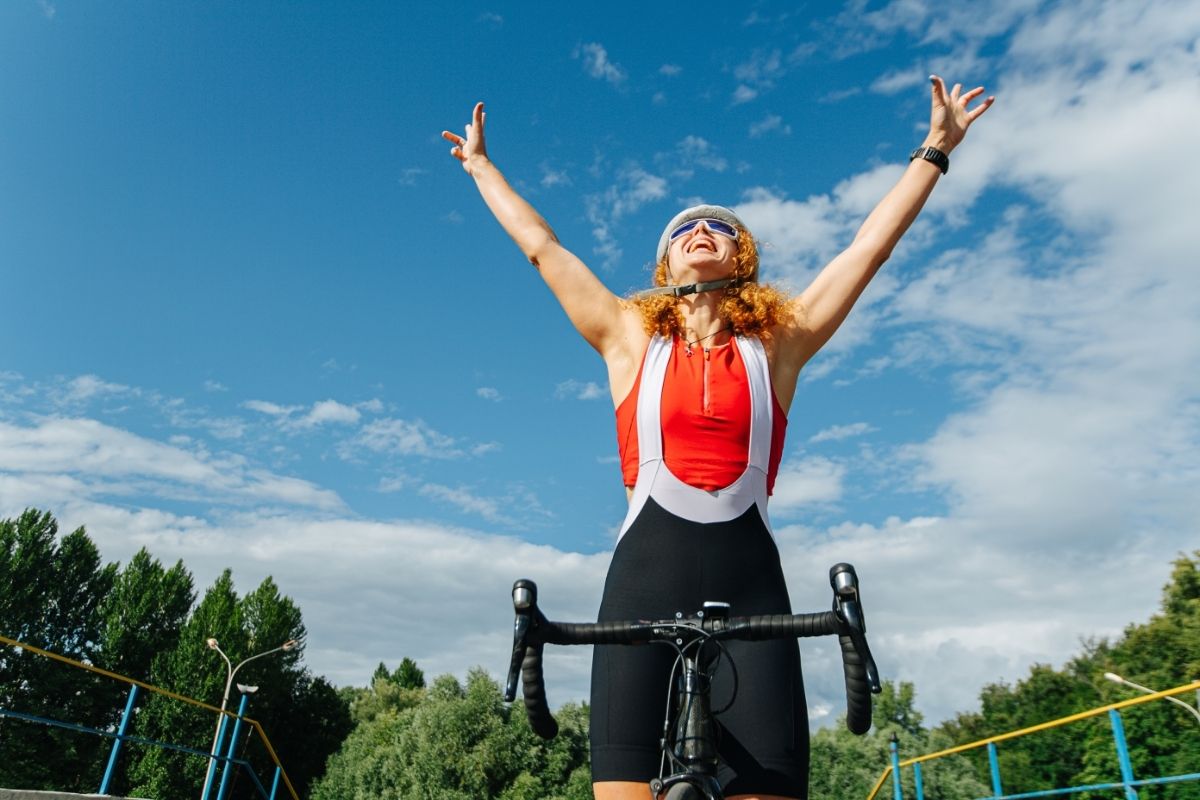If you like to watch cycling on the TV, or you just see a lot of cyclists out and about, you may have noticed that the average sock length is longer than you would expect in most situations.
Can it simply be coincidence? Do socks stretch when you subject them to such thrilling speeds as a bike can take you?
Well, there are actually several reasons for this particular piece of clothing, making it a deliberate choice when cyclists dress themselves for a bike session.
We’ll discuss why in this in-depth article, teaching you more than you ever needed to know about cycling socks.
Temperature Regulation
First, it’s a good idea to know why socks are necessary for cyclists in the first place.
It’s more than just to stop their shoes rubbing against their feet; cycling socks wick away moisture, which is important for cyclists when they are working up a sweat.
Cycling shoes are often tight-fitting, which means they can trap heat in the foot area and cause feelings of discomfort. Having the proper socks will not only keep your feet cool, but will also help prevent blisters during long bike rides.
Of course, any pair of cycling socks will have these properties and help immensely with regulating rider temperatures.
However, the longer your socks are, the less heat can be lost through the skin at your extremities. It makes sense that cyclists might want to cover themselves up more on colder days, even though they will probably warm up quickly as they ride.
You may not think that the length of socks makes much difference in that department, but it can affect your comfort level significantly.
Aerodynamics
Cyclists and other athletes will go to extreme lengths to gain even the most minimal speed advantage.
You will often hear about them shaving their legs to reduce the effects of drag and save precious seconds during a race. They will try anything (within the rules of competing) that might improve their times and give them an edge over their opponents.
Socks are another factor that can affect a cyclist’s aerodynamics. Long socks can decrease the drag on the leg because they surround it with a rough texture, creating a boundary layer of air on the surface.
In doing this, the air outside can flow smoothly around the shape of the leg and reduce wake, or displaced air behind the cyclist. This follows the same principle as dimples in a golf ball, which help it to glide further through the air.
Competition rules in some organisations state that riders’ equipment must not be designed to give riders a performance advantage.
According to the UCI (Union Cycliste Internationale, the official body that governs world sports cycling), socks cannot come higher than the middle of your lower leg.
Given that anything higher would be considered aerodynamically beneficial and therefore unfair, it stands to reason that cyclists would wear socks as long as they could get away with while still remaining within the regulations.
Protection
This is not so much the case with road cyclists, but certainly for mountain bikers, longer socks can help protect their legs from things like thorny branches or nettles that they may encounter during their ride.
Having bare legs exposes you to natural obstacles that can cause minor cuts and be painful. These tend to lie fairly close to the ground, so your lower leg is most likely to be affected. Therefore, it is good to have your socks covering the majority of this area.
We have read how cycling socks wick moisture and deal with your foot sweat, but what happens to the sweat from higher up your legs?
This will drip down your leg as you cycle, and can potentially reach as far as your ankles and feet. Long socks can catch the sweat before it gets that far, so your shoes don’t end up waterlogged and uncomfortable to wear.
Feel
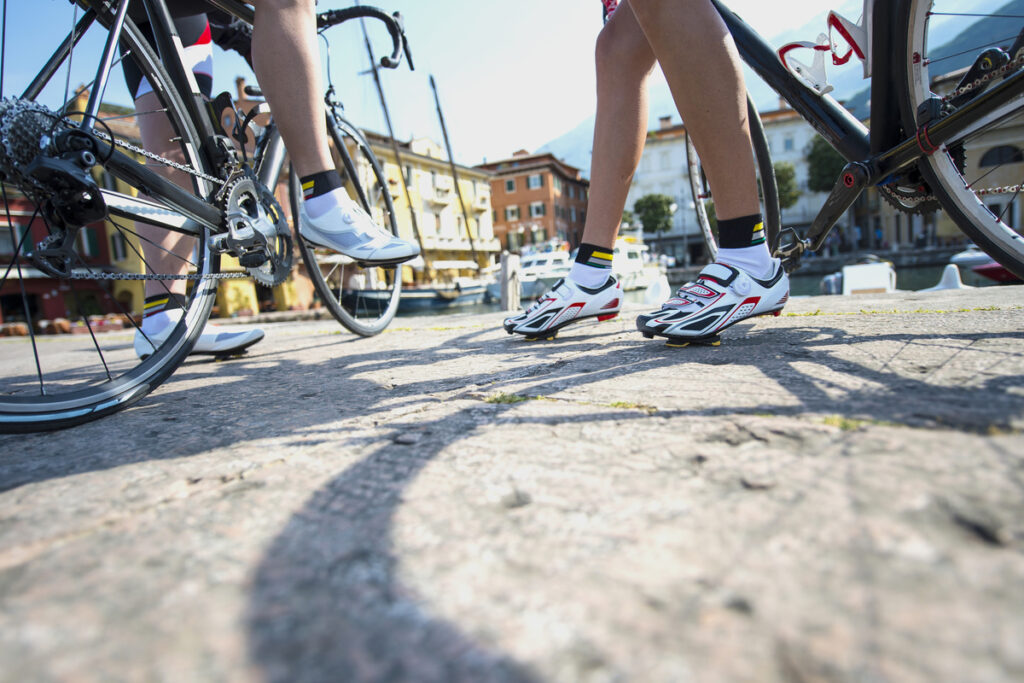
We tend not to notice the feeling of socks against our legs and feet in everyday life, unless we have heightened sensory awareness; they become almost like a second skin.
This is mainly because they are made from organic, comfortable materials like cotton and wool, rather than ones that will irritate the skin, so we can just wear them without thinking.
Most cycling socks are made from synthetic materials – often polyester or nylon.
These are excellent for sweat wicking and will keep your feet drier for longer. The socks are also double cuffed at the top, which prevents them from slipping down during your ride by keeping a stronger grip on your leg.
The cuffs will therefore need to sit in a comfortable place, so that the feel of them on your leg doesn’t distract you or affect your performance. For many riders, the mid-calf is an ideal place in terms of maximum comfort and grip.
Gender
Not all cyclists conform to the long sock ideology – female cyclists will typically be seen wearing shorter socks.
While the men have generally come to favor a longer cut in recent years, the most popular length of women’s cycling socks has stayed pretty stagnant at just 3cm, with 6cm also being a common choice.
In comparison, polls for cycling magazines in the last few years have found that 12.5 cm is the preferred sock length among male riders.
Fashion
One reason for the notable length of cycling socks is simply down to what people think looks good.
When they continually see one style of socks at cycle races, other bike enthusiasts tend to follow suit and buy themselves similar pairs.
This rise in demand has encouraged sock manufacturers to produce more and more long socks to keep their customers satisfied, which in turn has affected the availability of them in stores.
Without knowing exactly why the professionals wear what they do, amateur cyclists sometimes want to emulate their heroes and dress like them.
They may also assume that such socks have performance benefits of some kind, which could help them to reach their own cycling targets. Most of all, there is a familiarity that goes along with decisions like this and helps people to feel that they are part of an in-group.
According to some experts in the industry, socks can make a huge difference to how a cyclist’s outfit is perceived, and can even ruin their entire look.
While fashion may not be important to some people, it is certainly a consideration for prominent cyclists in the public eye.
Something as trivial as what socks they are wearing becomes important for aesthetic balance – after all, why wear expensive cycling gear, only to team it with any old socks that you might find in the back of your sock drawer?
Advertising
Professional cyclists like Lance Armstrong can be seen to have started the current trend, when competing in peloton races.
Competitors will wear clothing provided by their sponsors, complete with their logos, because big sporting events are a great way to advertise their products.
As well as the race suits and helmets, socks can also carry sponsor branding. Longer socks simply have a larger surface area to work with, allowing the logos to be bigger and catch the viewers’ attention more easily.
Conclusion
There is a well-established tradition in various cycling circles of wearing long socks, partly because of the benefits they can provide, and partly because that’s what cyclist fashion dictates.
Long socks can protect your legs and manage the levels of sweat you produce, but they also have more space for sponsors to advertise their wares via their riders.
Gender also plays a role in average sock length among cyclists, as long socks are far more popular with male riders than female ones.
In a lot of cases, riders will simply find it more comfortable for their socks to end higher up their legs, and it must also be noted that long socks will display calf definition better.
Many sports brands offer long socks as standard, while it is harder nowadays to find shorter ones in stores. However, there are still cycling socks of all different sizes available, so you can decide which ones are the right fit for you.
- Melbourne Bike Share App: Short Review - February 7, 2022
- Cycling Rules In Melbourne - February 4, 2022
- Bike Sharing In Melbourne: What Are The Alternatives - February 4, 2022

